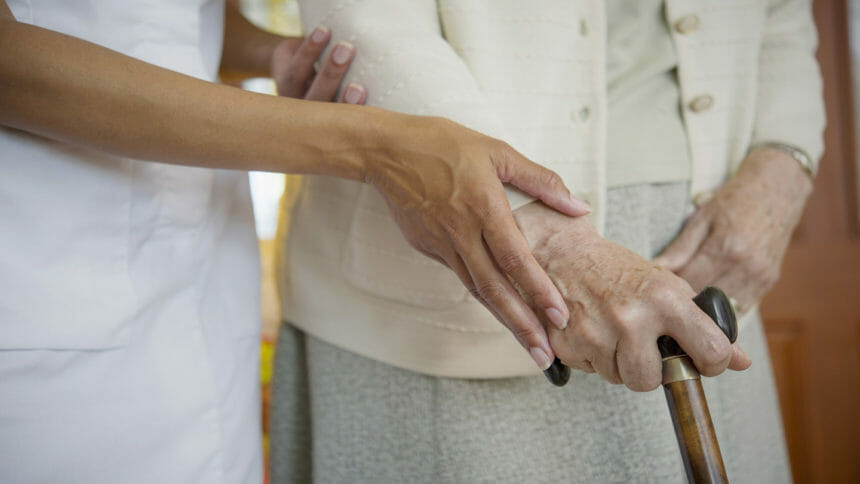
Editor’s note: This article has been updated from its original version to better describe the nature of the devices studied.
Addressing falls is a crucial topic for long-term care professionals, and there are a bevy of products out there trying to help. But are those detection devices really all they’re cracked up to be?
Canadian researchers aren’t so sure.
Pouring over nearly 120 worldwide studies on fall-prevention technology, investigators found that the majority were tested in lab settings utilizing students, and some used mannequins to simulate falls. Zero, they said, tested fall tech with seniors in real-life environments.
“There seems to be a knowledge gap between fall detection technology and the use of it,” Lili Liu, Ph.D., a professor in the faculty of rehabilitation Medicine at the University of Alberta and a co-author of the study, said in a press release. “It’s disturbing to think that these technologies aren’t properly tested for the real world, to be used by people who very much depend on them.”
Studies on fall-management technology — such as wearable devices or in-home sensors — also failed, in large part, to gauge feedback from users, the researchers added. Just three studies out of 118 actually delved into user acceptance of such devices, and none looked at senior preferences, they added, “leaving fall detection tech research out of step with the World Health Organization’s recommendation to address what older adults want.”
“None of the studies addressed the fact that just because you have a piece of technology that works, doesn’t mean it works for the older adult,” Liu said.
The vast majority of studies also failed to address the question of how much such devices cost (80%), or to include family or professional caregiver input (90%).
Research was funded partly by the AGE-WELL Network of Centers of Excellence. It also was conducted by the Université de Montréal and Universidad del Rosario.




